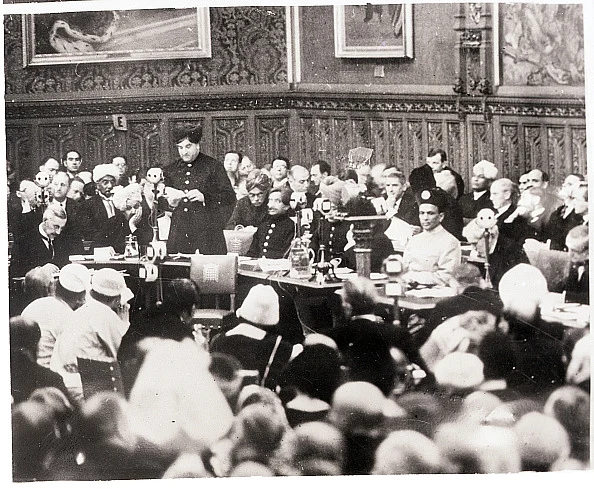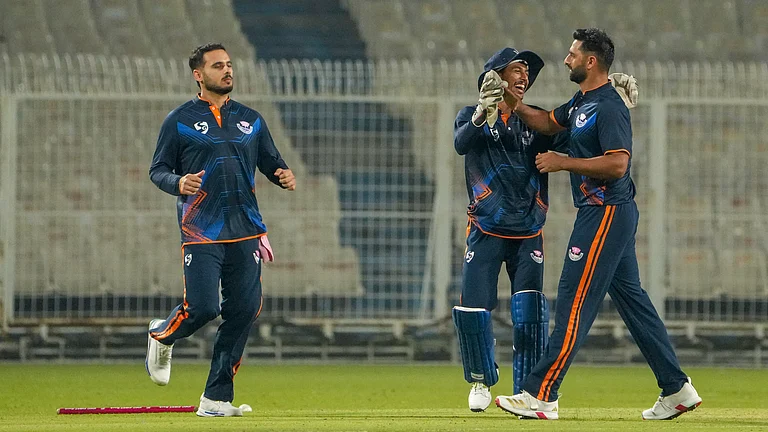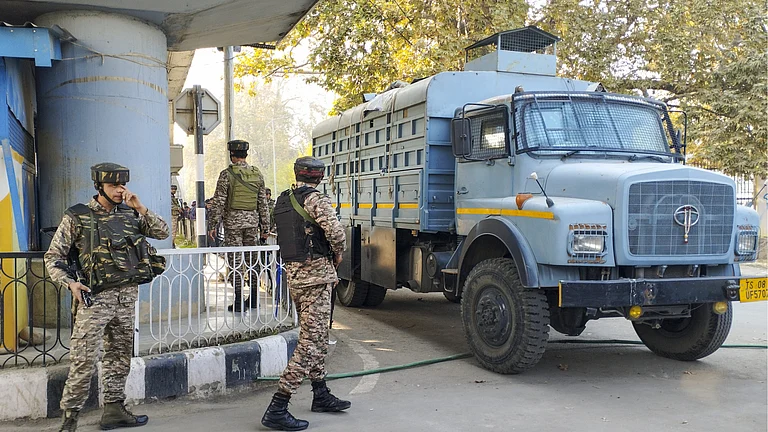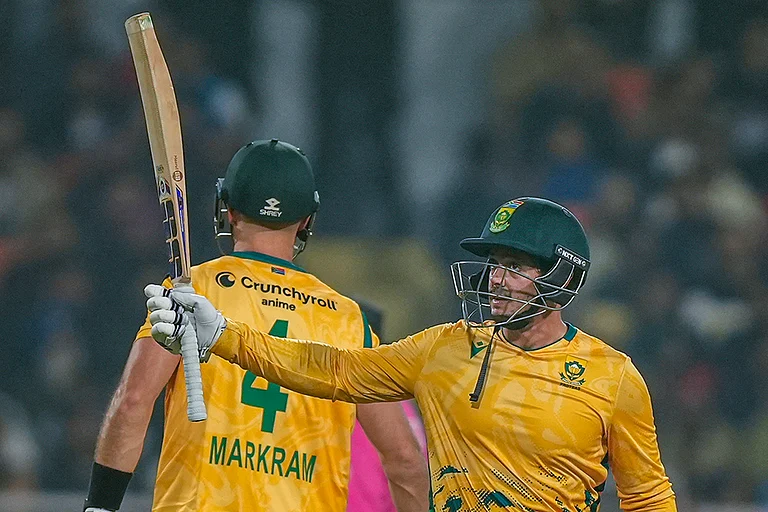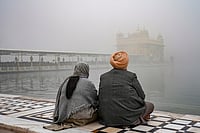Swami Sant Deo had a profound impact on Kashmir's history. He emerged during the tumultuous years of the 1940s and mysteriously disappeared in 1948. Although little is written about him, the available literature indicates that he was a significant figure who inspired Maharaja Hari Singh, the last Dogra Maharaja of Kashmir, with the vision of a greater Kashmir empire stretching from Kashmir to Lahore. Historians suggest that Maharaja Hari Singh believed in Swami Sant Deo and his dream.
Kashmiri historian Khalid Bashir Ahmad, author of the well-known book, "Kashmir Looking Back in Time," called Swami Sant Deo as Hari Singh’s ‘Rasputin.’ Bashir describes Swami as “a tall, handsome, and well-built pink-complexioned man even in his advanced age.” Bashir argues he loved the company of women and took opium regularly.
Dr. Karan Singh calls Swami Sant Deo a pro-RSS shadowy figure who constantly misled his father, the last Maharaja of the Dogra state of Jammu and Kashmir, Maharaja Hari Singh. “He would be whispering in Bapuji’s ears: ‘Aapka jhanda Lahore pe chandega, Kashmir phir se raj karenga’ (your flag will be raised in Lahore, Kashmir will rule again).”
In his foreword to Sandeep Bamzai’s book, Gilded Cage: The Years That Made and Unmade Kashmir, Dr. Karan Singh says Swami Sant Deo “was one of the many who planted the seed of remaining independent in my father’s head. “Strangely, I had no communication with him, but he wielded a lot of influence in the court. My father would tell me that the British would never leave India and that decolonization was a myth.”
Authors Siddharth Kak and Lila Kak Bhan, in their latest book on Kashmir about the life and times of his grandfather, Ram Chandra Kak, the last Pandit Prime Minister of Jammu and Kashmir, and his English wife, Margaret Kak, Love, Exile, and Redemption: The Saga of Kashmir’s Last Pandit Prime Minister and His English Wife, provide some insights about Swami Sant Deo.
“As the Maharaja was the absolute center of power, courtiers jostled for his attention and trust, betraying each other in the process. This was a chaotic state that the Maharaja himself encouraged, as he deeply distrusted everyone. This was why he kept changing his PMs frequently, lest they become more powerful. Added to this, his wife, with whom he was often at loggerheads, and her brother, Nichint Chand, created their own power center, eventually bringing in Swami Sant Deo, who sold the fantasy of a Greater Dogra Empire to the Maharaja, which eventually led to his downfall.”
The authors write that Swami Sant Deo came to have a deep hold over the Maharaja and Maharani in the years before the partition when their marital relations were most cordial. They considered him to have some unusual powers. “Sant Deo lived at Kud, near Patnitop, in summer and had his winter quarters in Lahore.” Kak says that his grandfather, the last Pandit Prime Minister of Jammu and Kashmir, Ram Chandra Kak, saw the Swami first at Haridwar in 1913. “At that time, he (Swami) had snow white hair, a very fair complexion and was possibly 50-or 60-years-old.”
The story goes like this: Swami Sant Deo lived in the Governor’s Bungalow at Chasme Shahi, high on the mountainside overlooking the Dal Lake. It is there that one day he was bitten by a poisonous adder. “Without expressing any distress, the Swami calmly obtained a particular herb from the hillside, applied a poultice on his swollen foot, and miraculously was perfectly alright the next morning! This added to the legend surrounding his powers.”
Kak goes on to describe Swami further. “The Maharaja believed him to be about 250 years old, but Bhaiji (Ram Chandra Kak) told me that he could not possibly have been more than 90 years old in 1945.”
Even Ram Chandra Kak believed that Swami could not have reached the status he had attained in the Maharaja’s court “without some real evidence of greatness at some stage.”
“Bhaiji told me that when the raiders entered Kashmir in October 1947, the Maharaja requisitioned the available Kashmir military transport trucks, loaded all his bags and baggage in the dead of the night, and left for Jammu. On the way, the Swami was dropped off at Kud. Thereafter, having perhaps lost his importance and power, there was little or no contact between the Maharaja and the Swami, who died a few years later, probably in Delhi,” Kak wrote in the book.
Bashir also writes there were quite a few people, apart from Prime Minister Ram Chandra Kak, who had fueled Hari Singh’s desire to be an absolute ruler of an independent country. “Among them, Rajguru Swami Sant Deo was the foremost. He was a non-state subject about whose native place nothing is known even as it was believed by some that he had been planted in the palace by the British Government. He had arrived in J&K during the time of Maharaja Pratap Singh who, being a very superstitious person, had assembled a number of Hindu swamis (priests), astrologers, and gurus (spiritual guides) round his court.”
When Maharaja Hari Singh took over the throne in 1925, being agnostic, he banished all Swamis and others including Sant Deo. But after two decades, Sant Deo “made a mysterious comeback in 1944 and by 1946, had firmly ensconced himself again as the Rajguru. Hari Singh installed him in the Cheshma Shahi Guest House or the present Raj Bhawan, originally built by the Maharaja for Maharani Tara Devi. From May 1946 until October 1947, he was always in residence in various houses within the palace compound in Srinagar.”






